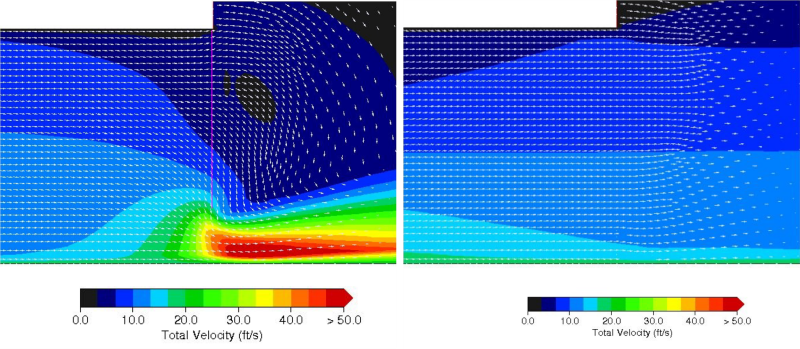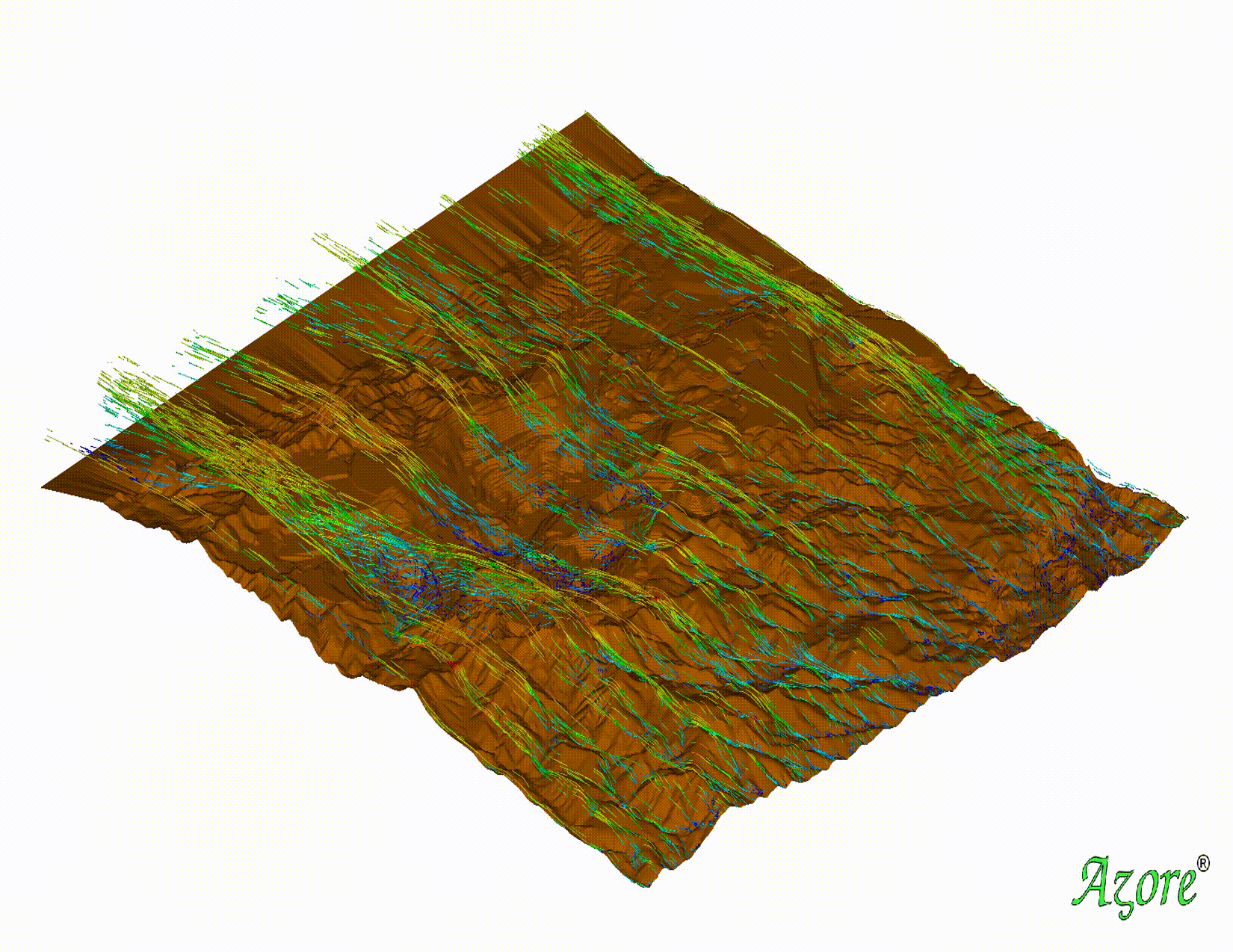Dust Mitigation
Mining operations can generate large amounts of particulate, and efforts to control it represent a significant amount of operational cost. Dust can become a problem anytime an operation transports, refines, or otherwise processes a dry material. CFD modeling is an effective way to both evaluate current dust mitigation systems and design new solutions. Modeling can eliminate trial and error in the field and will help ensure that new designs will be effective, even with varying external conditions.
Conveyors and Transfer Chutes
Dust is often generated at transfer points in a conveyor system. Models of these systems can help identify the best way to maintain a tight material stream and minimize air velocities causing re-entrainment. Modeling can show how system parameters affect dust creation, like drop height, belt speed, and the placement of chute walls and deflector plates. Simple changes can greatly reduce fugitive dust by controlling the flow of material in a way that decreases air velocity while maintaining the optimal speed of raw material.

Drilling and Blasting Areas
Drilling and blasting areas may require significant dust mitigation, often through wetting techniques or dust collection systems. In addition to dust created by material removal, open pit mining operations must also consider atmospheric conditions. External flow CFD analysis of drilling and blasting sites can help take into account unique factors of the operation, such as variable topography, drilling equipment, existing dust remediation systems, specific dust chemistry, and worst-case wind scenarios. For underground mining, CFD of the ventilation system can help maximize dust collection and minimize removal time.
Stockpiles and Tailing Piles
Any exposed area at a mine is subject to dust generation and wind erosion, including stockpiles, tailing piles, haul roads, and exposed product surfaces. Modeling can evaluate the various placement options and parameters for minimizing fugitive dust, as well as optimizing water spraying techniques, wetting systems, water cannons, or any dust suppressant application. CFD is also a powerful tool when considering the location, height, and porosity of wind fences.

Crushing, Milling and Screening
CFD modeling of the crushing, milling, and screening process can help ensure that engineering controls are set up for maximum performance, whether they are existing systems or new designs. These include filtration and exhaust systems, sprayers, pressure booths, and airflow around mills/grinders.
Learn More:
